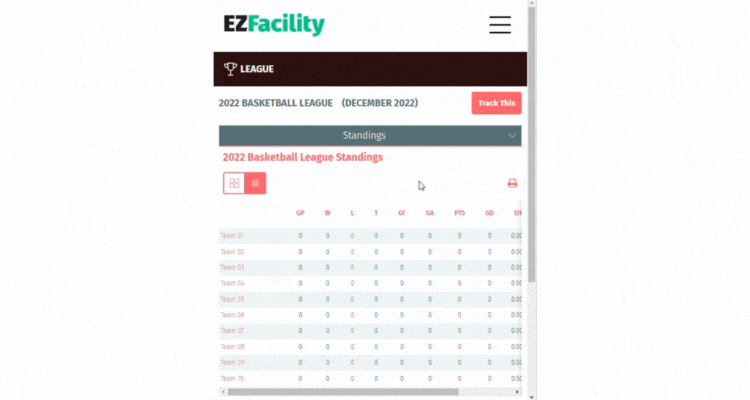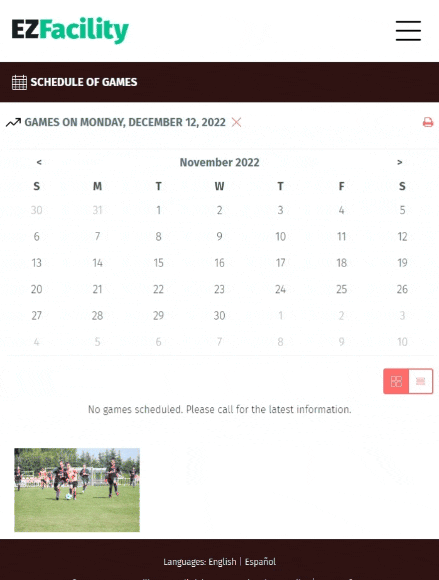As with any business, before opening a sports facility business you’ll need to do ample research and planning to set yourself up for long-term success.
Invest time upfront to gain a thorough understanding of the fitness industry and the challenges that come with starting a new sports facility. With this knowledge, you can put strategic plans in place to navigate foreseeable obstacles, mitigate risk, increase profitability, and keep things running smoothly.
In this blog, we’ll walk you through the basics of opening a sports facility business to help turn your dream into a reality!
A Beginner’s Guide to Opening a Sports Facility Business
Like any new business venture, opening a sports facility business will require significant preparation, planning, and investment. It’s absolutely critical to do your due diligence so you know what to expect and can prepare accordingly.
Below, we’ve put together a simple beginner’s guide to get you started. Following these steps will help make sure your new business venture is well-planned, properly registered, and legally compliant.
Name Your Sports Facility Business
Choosing a name for your sports complex may be one of the most fun decisions you’ll make as a new business owner; however, be aware it can be deceptively difficult to decide on a name that will be straightforward, intriguing, and one that will mature well with your business. Your business name will be around with you for a long time, so it’s important to carefully consider your options.
Once you’ve decided on a name for your sports facility business and confirmed its availability, it’s important to secure your domain name and social media handles as soon as possible—and before someone else does—so you can start building your online presence.
Define Your Target Market
If you want to attract and engage your target audience, you need to know who they are (i.e., local demographic data, including income levels, ages, population density, etc.), as well as what they like/dislike, and what their wants/needs are.
Equipped with this thorough understanding of your customer base, you’ll be able to determine what sets your sports complex apart from competitors and tailor then your marketing materials accordingly to pique relevant interest and maximize engagement.
How to learn about your target audience:
Market research reports
You may want to consider purchasing market research reports to help you better understand the local community and its needs. This critical insight will help you decide how your sports complex can specifically fulfill those needs and add value to the community, which will largely impact your long-term viability and success.
Competitor reviews
Another way to learn about potential members is by reading online reviews about your direct competitors to see what customers have said. Pay close attention to what they like and what they don’t like about similar sports facilities—this will help you look for ways to potentially improve upon existing products or services, or identify opportunities to create and offer something new.
Choose a Location
“Location. Location. Location.” It’s one of the most popular sayings in business for a pretty obvious reason—location matters. A lot. The physical location you choose for your sports facility business may very well be the difference between success and failure.
Your customer base will be heavily influenced by the location you choose. For example, if your facility is located near a school district or neighborhoods with young families, you’ll attract a larger customer base than you would if your location is far removed from residents, is in an unsafe on undesirable location, is located near competing businesses, or is in an area where residents have little to no interest in the sport.
You’ll also need to decide whether you purchase or lease a property as this will impact your location options. Once you find a location you love that’s within your budget, you’ll need to check the local zoning requirements to make sure your businesses will be in compliance so you don’t run into any unexpected legal issues.
Create a Business Plan
If you want to open a sports facility business, the first step is to develop a comprehensive business plan. Creating a business plan will help you develop a greater understanding of your industry, competitors, target market, and help you identify ways to differentiate your facility so you can plan for long-term success.
What is a business plan?
A business plan is a written document that defines company goals and objectives, and explains how the company plans to achieve those goals. The best way to set yourself up for future success is to start with a solid plan—and an effective business plan should guide you through the phases of starting, managing and growing your sports facility business.
Think of your business plan as the compass that will guide your sports facility and keep everyone moving in the right direction. Your business plan is the place to put all of your thoughts and plans in one place, so it’s important to take your time to ensure you cover all elements and aspects of your sports facility complex.
Having a strong business plan will help you:
- Assess your competitors
- Develop a greater understanding of your target market
- Serve as a guide to grow your business
- Help you reach milestones
- Help you secure funding
What should my business plan include?
Below is an overview of key areas to include when creating your sports facility business plan:
Cover Page
A small yet fundamental component of your business plan is the cover page, which should include the name of your business, location, and contact information.
Table of Contents
The table of contents is where you’ll provide an outline of what readers can expect to find in your business plan. It also helps readers quickly skim or skip to the areas of greatest interest.
Executive Summary
The executive summary is where you’ll summarize the contents of your business plan in a concise, detailed and compelling way.
This section should be no longer than one page, and should answer key questions such as:
- What are your business goals and how will you achieve them?
- Who is your target market?
- What are your financial projections?
- What’s your competitive advantage?
Industry Background
In this section, you’ll provide past and current information about the size, trends and critical features of your industry. This section should answer questions such as:
- What is the industry?
- What is the industry outlook?
- Who are the competitors?
- What are the barriers to entry?
Competitive Analysis
Your competitive analysis should provide key information about your major competitors, as well as an assessment of your competitors’ strengths and weaknesses.
Market Analysis
Learning about your target market and their needs, preferences and demographic data is an integral part of any business plan. By identifying and understanding your target market, you’ll learn how—and where—to reach and connect with them.
This section should also demonstrate that there is a real need or demand in the market that your new business will fulfill.
Sales and Marketing
In the sales and marketing section of your business plan, you’ll explain how you plan to allocate marketing resources to most effectively reach new customers and convert them into long term customers. Be sure to include specific marketing strategies and explain how they align with business goals and objectives.
Cost Projections and Funding
The financial section is the foundation of any good business plan. It should provide current and future projections of your facility’s financial performance, and show how much money you need to generate in order to be profitable and poised for continued growth.
Cover the Legal Aspects
There are a number of legal requirements to opening a sports facility. In addition to registering your business name with the county clerk, you’ll also need to file articles of incorporation or articles of organization with your state government and pay a filing fee.
It’s also recommended to purchase a business owner’s insurance policy, which will provide liability and property protection for your sports facility business.
Purchase Equipment & Supplies
Now it’s time to shop!
Prepare a list of everything you’ll need before opening your doors—from desk pens to equipment and machinery so you can plug it into your budget. You’ll also need to create a floor plan with dimensions noted to ensure you have the space and a plan for where everything will go.
Leverage Technology to Maximize Efficiency
As a sports facility business owner, it’s crucial to stay aware of what new technology is on the horizon, how it may benefit your sports business, and how it will affect the larger industry landscape. Equally as important, you must be willing to adapt and invest in technology to streamline and improve your business operations and remain competitive.
Gym management software continues to grow in popularity given its ability to increase efficiency and productivity, reduce the risk of human error, save time and money, and enhance the member experience. On top of that, the low upfront cost structure of a cloud-based software solution makes it a financially attractive option for fitness businesses of all sizes.
From scheduling staff and fitness classes to overseeing equipment maintenance and inspections, the number of moving parts at any given time can be overwhelming. Without the right organizational tools, clear communication channels, and effective oversight, things can get out of hand pretty quickly and result in costly errors.
Turn your dream of starting a sports facility business into a reality!
Before opening a sports facility business, it’s vital to conduct thorough market research, create a comprehensive business plan, and actively promote the business.
Another way to contribute to the success of your new business venture is to start with a solid framework and management software system in place to help streamline administrative tasks, improve communication and collaboration, enhance membership management, simplify financials, and more—saving you valuable time and money.
EZFacility is here to help with tools to start and manage your business successfully—including facility management software, online registration, league management, and a mobile app for your members.
Want to learn more? Schedule a free online demonstration and personalized product tour today.


























